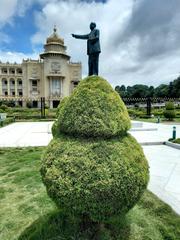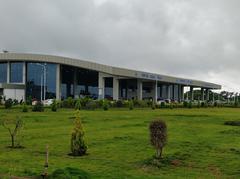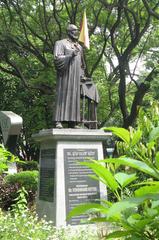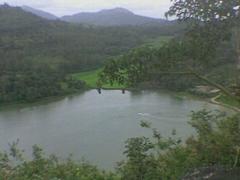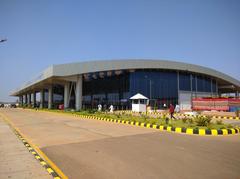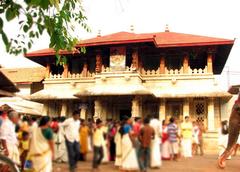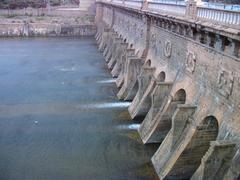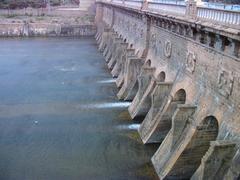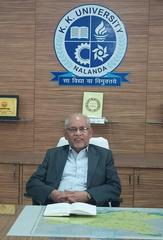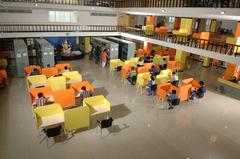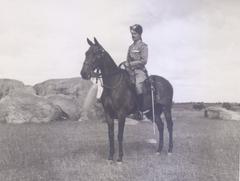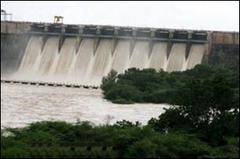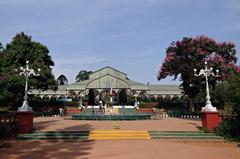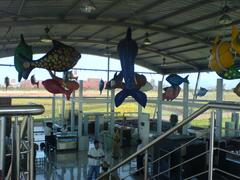Hallur Karnataka Historical Site: Visiting Hours, Tickets, and Travel Guide
Date: 04/07/2025
Introduction to Hallur Historical Site
Hallur, set in Karnataka’s Haveri district, is a site of immense archaeological and cultural significance. Recognized as one of South India’s earliest Iron Age settlements, Hallur offers visitors a rare opportunity to witness the evolution of prehistoric societies—from Neolithic-Chalcolithic communities to early Iron Age innovators. Its continuous human occupation, dating as far back as 2000 BCE, has yielded invaluable insights into ancient metallurgy, agriculture, and settlement patterns (Wikipedia; Traveltourguru).
Exploring Hallur, you’ll encounter pottery kilns, iron smelting furnaces, megalithic burial sites, and prehistoric ash mounds—each artifact telling a story of early human ingenuity (Karnataka Travel). Complementing the archaeological site, the Hallur Jain Temple showcases the region’s spiritual traditions and Dravidian architectural splendor.
This comprehensive guide covers Hallur’s historical background, practical information on visiting hours and ticketing, travel logistics, accessibility, nearby attractions, and travel tips. Whether you are a history enthusiast, a curious traveler, or a cultural explorer, Hallur promises a deeply immersive journey into Karnataka’s ancient past.
Contents
- Discover Hallur: Karnataka’s Ancient Archaeological Marvel
- Historical and Archaeological Significance
- Early Settlement and Chronology
- What to See at Hallur
- Archaeological Highlights
- Subsistence and Daily Life Exhibits
- Planning Your Visit
- Visiting Hours and Tickets
- How to Reach Hallur
- Accessibility and Amenities
- Guided Tours and Photography
- Nearby Attractions
- Hallur Jain Temple: Cultural and Historical Guide
- History and Significance
- Visiting Hours and Tickets
- Getting There
- Guided Tours and Events
- Photography and Etiquette
- Nearby Attractions
- Cultural Insights and Accessibility
- Practical Visitor Information
- Best Time to Visit and Weather
- Accommodation and Local Facilities
- Health, Safety, and Responsible Tourism
- Essential Packing List
- Language and Currency
- FAQs
- Summary and Visitor Recommendations
- Sources and Further Reading
Discover Hallur: Karnataka’s Ancient Archaeological Marvel
Situated on the banks of the Tungabhadra River, Hallur is a remarkable site where visitors can trace the origins of South Indian civilization. Its layered occupation offers a unique glimpse into the daily lives, rituals, and technological advancements of prehistoric communities (Wikipedia).
Historical and Archaeological Significance
Early Settlement and Chronology
Hallur is among the oldest Iron Age sites in South India, with evidence of continuous habitation from the Neolithic-Chalcolithic era (c. 2000–1200 BCE) through the early Iron Age (c. 1200–1000 BCE) (Wikipedia; Traveltourguru). Excavations have revealed:
- Period I – Neolithic-Chalcolithic: Characterized by agriculture, domestication of animals, use of polished stone tools, microliths, and bone implements (JETIR).
- Period II – Overlapping Neolithic-Chalcolithic and Early Iron Age: Notable for early iron smelting evidence and the gradual transition from stone to metal tools (Simplified UPSC).
Radiocarbon dating and archaeobotanical studies have been instrumental in refining Hallur’s chronology and understanding South India’s metallurgical evolution (Wikipedia).
What to See at Hallur
Archaeological Highlights
- Pottery Kilns and Ceramics: Examine ancient Black-and-Red Ware, russet-coated ware, and plain red ware, all crafted in prehistoric kilns (Karnataka Travel).
- Iron Smelting Furnaces: View remnants of early iron technology, including arrowheads, daggers, and tools (Traveltourguru).
- Prehistoric Ash Mound: Explore the distinct ash mound composed of burnt dung and plant material, possibly used in rituals or daily life (Karnataka Travel).
- Megalithic Burials: Discover stone circles and cairns, revealing the burial customs and social structures of early Iron Age communities (JETIR).
Subsistence and Daily Life Exhibits
Find evidence of agricultural diversity—finger millet, kodo millet, rice, black gram, and hyacinth beans—alongside animal remains such as cattle, sheep, goats, and horses (Story of Kannada). Circular mud-and-thatch houses exemplify settlement patterns of the period (Traveltourguru).
Planning Your Visit
Visiting Hours and Tickets
- Opening Hours: 9:00 AM–5:30 PM daily (confirm with local tourism sources before visiting).
- Entry Fee: Typically, there is no entry fee. However, in some locations a nominal charge (INR 20–50) may apply for maintenance; check on arrival.
How to Reach Hallur
- By Road: Accessible from Haveri (20 km), Belgaum (100 km), and Mudalgi (6 km), via regular buses, taxis, or private vehicles (VillageInfo).
- By Rail: Nearest stations are Haveri Junction and Mudalgi; further road transport is required.
- By Air: Closest airports are Hubli (100 km) and Belgaum (over 10 km).
Accessibility and Amenities
- Accessibility: The terrain is uneven, with moderate climbs; suitable walking shoes and water are recommended.
- Facilities: Limited on-site amenities—carry essentials such as water, snacks, sun protection, and a camera.
Guided Tours and Photography
- Guided Tours: Local guides are available for hire; they provide valuable context and enrich your visit.
- Photography: Allowed in most areas; observe posted restrictions, particularly regarding drones and flash.
Nearby Attractions
- Haveri: Known for ancient temples and markets.
- Siddapura Ashram: A spiritual retreat nearby.
- Badami, Aihole, Pattadakal: UNESCO World Heritage temple complexes within driving distance.
- Gokak Falls: Scenic waterfall for nature enthusiasts.
Hallur Jain Temple: Cultural and Historical Guide
History and Significance
The Hallur Jain Temple, dating back centuries, stands as a testament to the region’s Jain heritage. Its Dravidian architectural style and intricate carvings make it a significant spiritual and cultural landmark.
Visiting Hours and Tickets
- Opening Hours: 6:00 AM–8:00 PM daily.
- Entry Fee: None; donations are welcome.
Getting There
- By Road: Connected to major Karnataka cities via bus and taxi.
- By Rail/Air: Nearest railway station and airport are in Belagavi and Bengaluru, respectively.
Guided Tours and Events
Guided tours are available upon request (coordinate with the temple trust or local operators). Special events like Mahavir Jayanti and Paryushana feature processions, communal feasts, and rituals.
Photography and Etiquette
- Photography: Permitted only in designated areas with prior consent.
- Dress Code: Modest clothing, removal of footwear, and respectful conduct are expected.
Nearby Attractions
- Shravanabelagola: Renowned for the Gomateshwara statue.
- Mysore Palace: Iconic Indo-Saracenic monument.
- Coorg: A destination famed for its scenic beauty.
Cultural Insights and Accessibility
- Language: Kannada is primary; English is understood in tourism settings.
- Cuisine: Sample local dishes such as Bisi Bele Bath and Ragi Mudde.
- Festivals: Participation in temple festivals offers insight into Jain customs.
- Accessibility: Contact temple management in advance to arrange for special needs.
Practical Visitor Information
Best Time to Visit and Weather
- Optimal Season: October–March, when temperatures are pleasant and rainfall is minimal (MakeMyTrip; holidify.com).
- Monsoon Warning: Heavy rains (June–September) can make the site less accessible.
Accommodation and Local Facilities
- Stay Options: Nearest hotels are in Mudalgi, Gokak, Haveri, and Belgaum.
- Amenities: Basic services (ATMs, pharmacies, eateries) are available in nearby towns.
Health, Safety, and Responsible Tourism
- Medical Facilities: Limited in Hallur; better-equipped hospitals in Mudalgi, Gokak, and Belgaum.
- Safety: Guard valuables, avoid remote areas after dark, and respect local customs.
- Sustainability: Do not disturb archaeological remains; support local businesses, reduce plastic use, and dispose of waste properly.
Essential Packing List
- Sturdy walking shoes and comfortable clothing
- Sun protection (hat, sunscreen)
- Water bottle and snacks
- Camera or smartphone (with extra batteries)
- Personal medical kit and insect repellent
- Local currency (INR); ATMs are in nearby towns
Language and Currency
- Language: Kannada is predominant; some Hindi and English spoken.
- Currency: Indian Rupees (INR); carry cash for small purchases.
Frequently Asked Questions (FAQs)
Q: Is there an entry fee for Hallur archaeological site?
A: Usually no, but check for local updates as nominal charges may apply.
Q: What are the visiting hours?
A: Generally 9:00 AM to 5:00 PM for the archaeological site; 6:00 AM to 8:00 PM for the Jain temple.
Q: Are guided tours available?
A: Yes, local guides can be hired at both the archaeological site and Jain temple.
Q: Is Hallur suitable for elderly or mobility-impaired visitors?
A: The terrain is uneven; exercise caution and make prior arrangements if needed.
Q: When is the best time to visit?
A: October to March for comfortable weather and clear access.
Q: Where can I stay near Hallur?
A: Accommodation is available in Mudalgi, Gokak, Haveri, and Belgaum.
Summary and Visitor Recommendations
Hallur stands as a testament to Karnataka’s profound prehistoric and cultural legacy. Its archaeological treasures—pottery kilns, iron furnaces, and megalithic burials—reveal South India’s early advancements in metallurgy and agriculture (Wikipedia; Traveltourguru). The Hallur Jain Temple further enriches the experience with its spiritual ambiance and architectural beauty.
With defined visiting hours, budget-friendly access, and knowledgeable guides, Hallur is a rewarding destination for history and culture enthusiasts. Plan your journey between October and March for optimal weather, and consider extending your trip to explore nearby UNESCO sites and natural wonders. Respect local customs, support sustainable tourism, and make use of travel resources like the Audiala app for a seamless and memorable experience.
Sources and Further Reading
- Wikipedia – Hallur Archaeological Site
- Traveltourguru – Archaeological Sites in Karnataka
- Story of Kannada – Hallur Archaeological Site
- JETIR – Hallur Archaeological Research
- Karnataka Travel – Prehistoric Ash Mound of Hallur
- VillageInfo – Hallur Village Details
- holidify.com – Karnataka Travel Guide
- MakeMyTrip – Best Time to Visit Karnataka
- Geolysis – Hallur Village
- TouristPlaces Guide – Karnataka Attractions
- Archaeological Survey of India – Karnataka Circle

